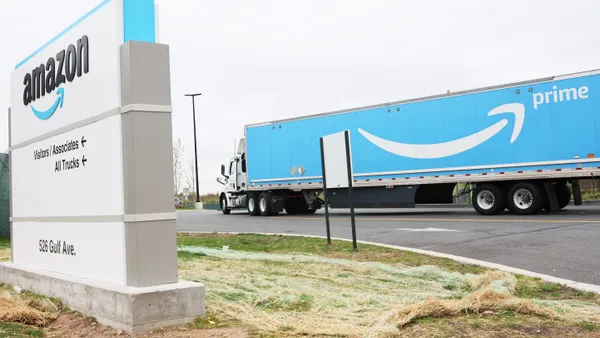The LTL sector is on fire — in a good way and in a bad way.
As North America recovers from the COVID-19 pandemic and ports untangle their imports, the LTL sector is straining to keep up with shippers. The cause is overflow from TL freight.
"[TL divisions] are five times the size of the LTL divisions. And when they get full, the spillover comes into LTL," said Lance Moll, president and CEO of FedEx Freight, during a June 24 earnings call. "We have the largest LTL carrier [and] get the majority of it."
The on-fire LTL sector isn't great for everyone. In some cases, carriers have had to refuse shippers.
In early June, FedEx Freight executed what it called a "temporary targeted volume control" in its Q4, which ended May 31. As many as 1,400 clients were temporarily suspended, FreightWaves reported.
Moll said a number of factors led FedEx Freight to say "no" to some shippers and install limits on volume. He blamed competitors, a surging TL market and record growth.
"Combined with ... the broad actions our competitors have taken to embargo entire sections of the country without any notice, impacting all customers, we decided to take an implemented temporary targeted volume control to drive and minimize the network disruptions and balance capacity to avoid the backlogs across the entire country," Moll told analysts in FedEx's Q4 earnings call. "So, with record growth has come some tough but necessary decisions to protect our employees, reduce our backlogs and staff to our business volume. This continues to be the driving force behind our business decisions."
When asked about the actions taken, a spokesperson for FedEx Freight said the steps were necessary and temporary.
"[It] provided necessary volume relief and allowed us to begin bringing some of the volume back in a controlled manner," the spokesperson said.
Days after implementation, FedEx reportedly reversed the suspensions.
Trucking experts said the pressure is in no way unique to FedEx Freight or other top LTL carriers. Consumers and businesses accross the board are experiencing the squeeze as the North American economy comes more fully online.
"Everything in the supply chain is just going crazy," said Ben Wiesen, president of Carrier Logistics. "The one thing that isn't changing is the rate of change."
Wiesen said capacity is crunched, and it's problematic for LTL carriers to add more trucks. For one, more trucks mean a need for more service centers. And building new service centers takes a lot of time.
"Real estate is just as big a capacity problem as drivers," said Wiesen.
In February, Dave Bates, Old Dominion senior vice president of operations, told Transport Dive that real estate was driving its capacity headaches. The LTL giant will often buy lots in sizes of 10 acres or 20 acres, in case they need to expand. Approvals are another problem, he said.
Cathy Roberson, president of Logistics Trends and Insights, said the LTL crunch is caused by larger freight volumes being ordered by consumers, as well as shippers doing inventory replenishment.
To help ease the strain, LTL companies are eyeing higher rates and surcharges, she said. Roberson said shippers should expect higher rates and surcharges, especially the latter. Surcharges have the effect of hiding higher rates, and are used by airlines in the same manner, she said.
The surge in LTL business will continue throughout the year, and likely in Q1 2022, before a return to normality, she said.
If adding more surcharges doesn't work, then LTL carriers may start combing through their Rolodexes, readying the scythe to chop some customers off, Wiesen said. Shippers who have strung out payments to the LTLs may be first on the block, he said.
"There is absolutely no question that LTLs are looking at their books of business," said Wiesen.














